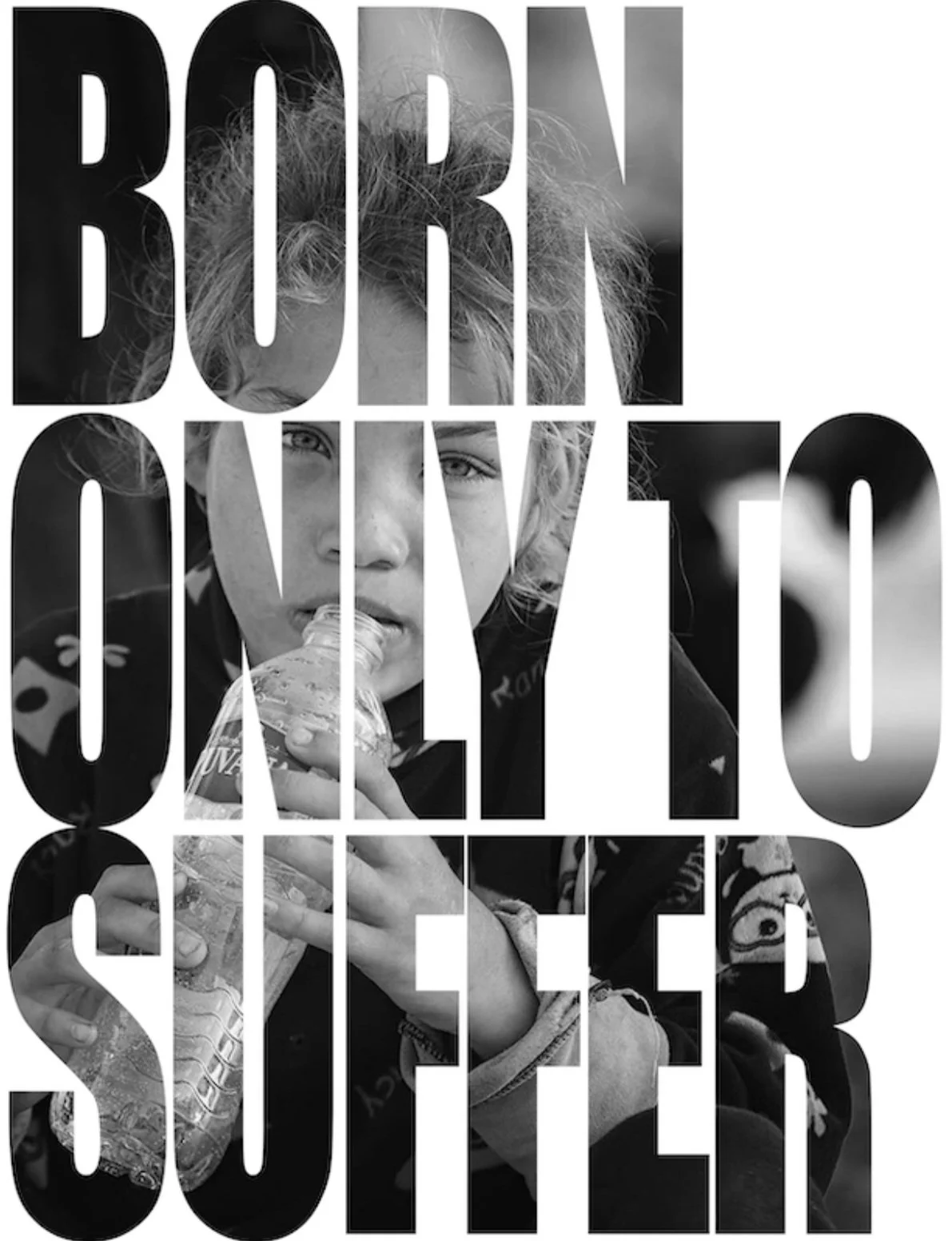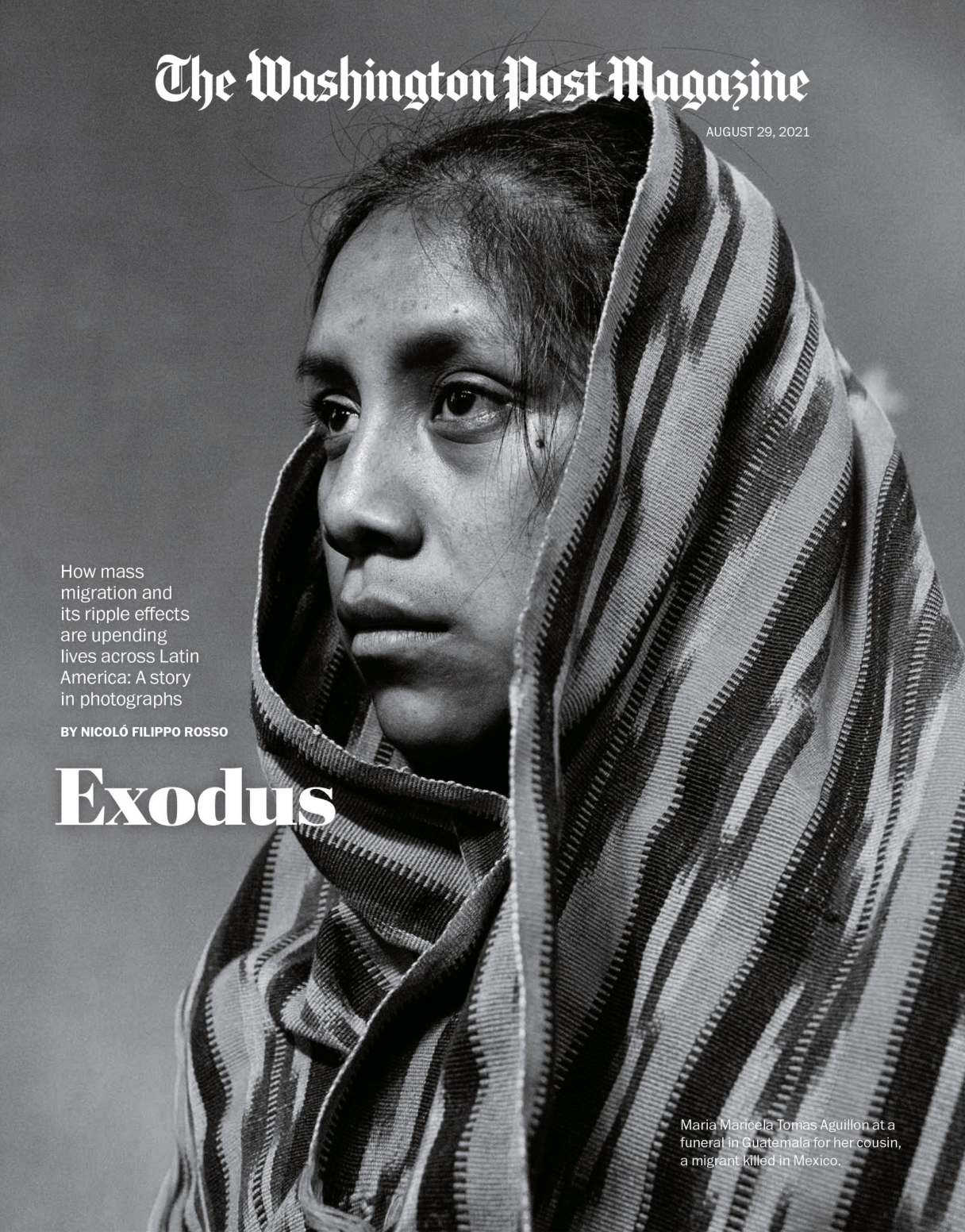
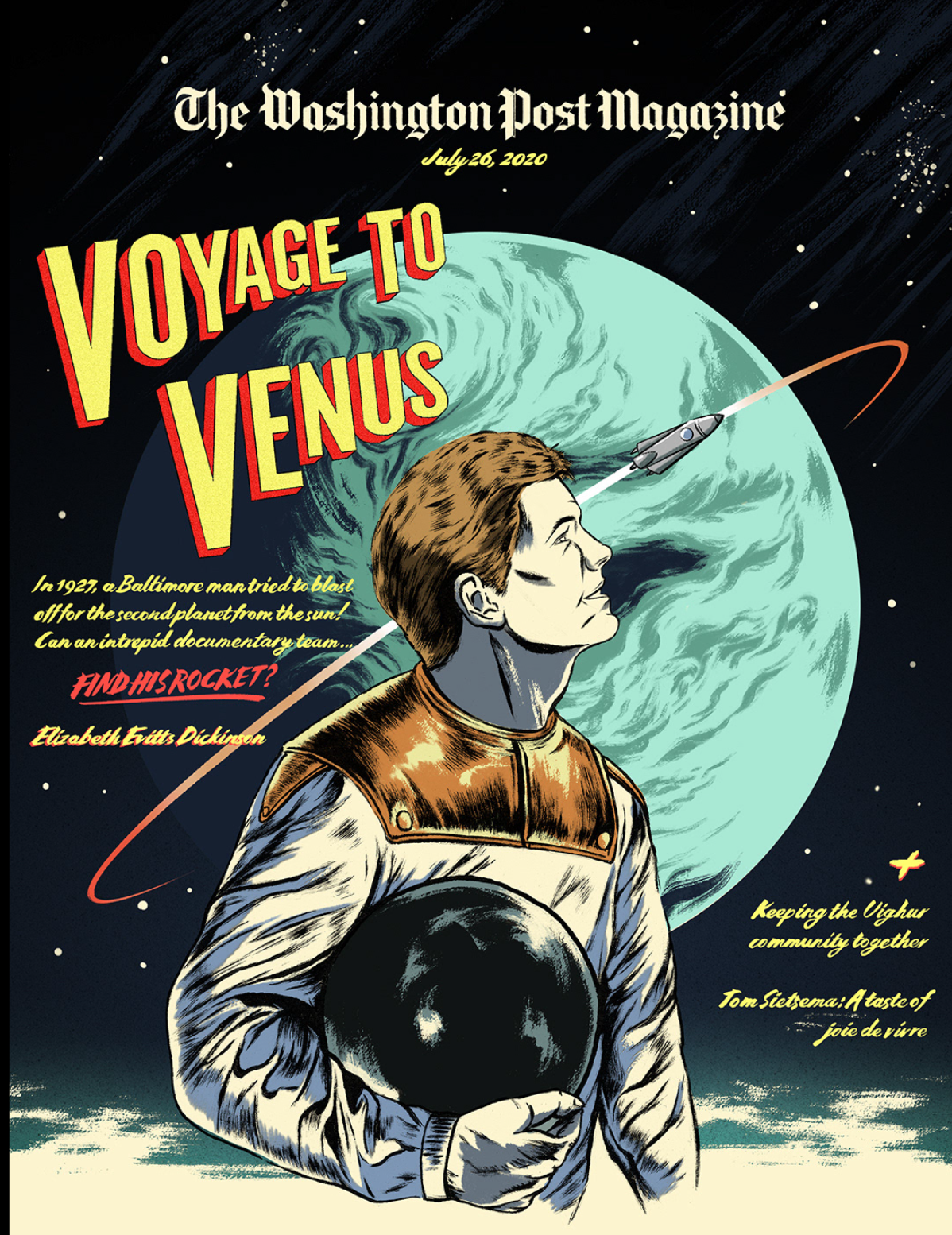
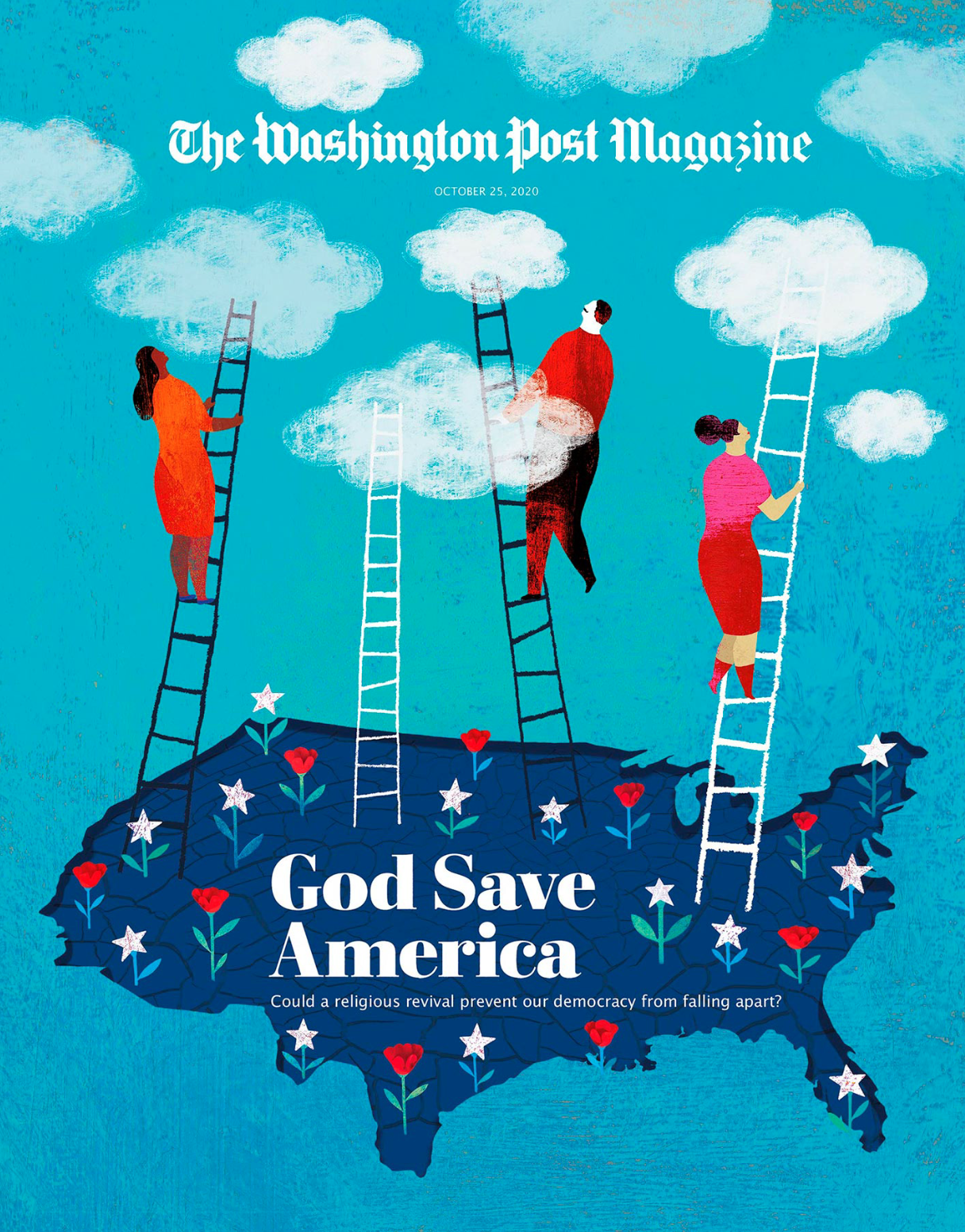



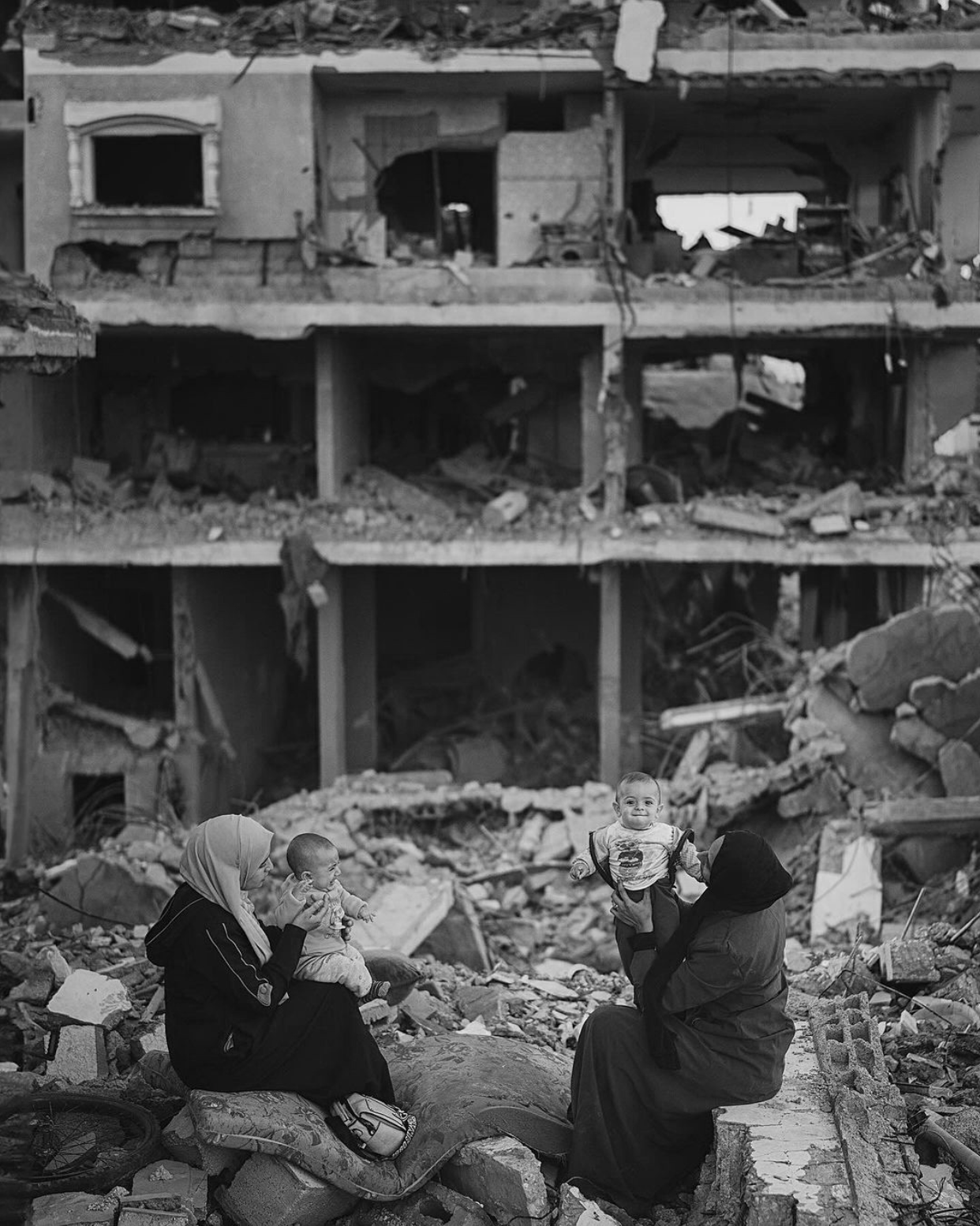

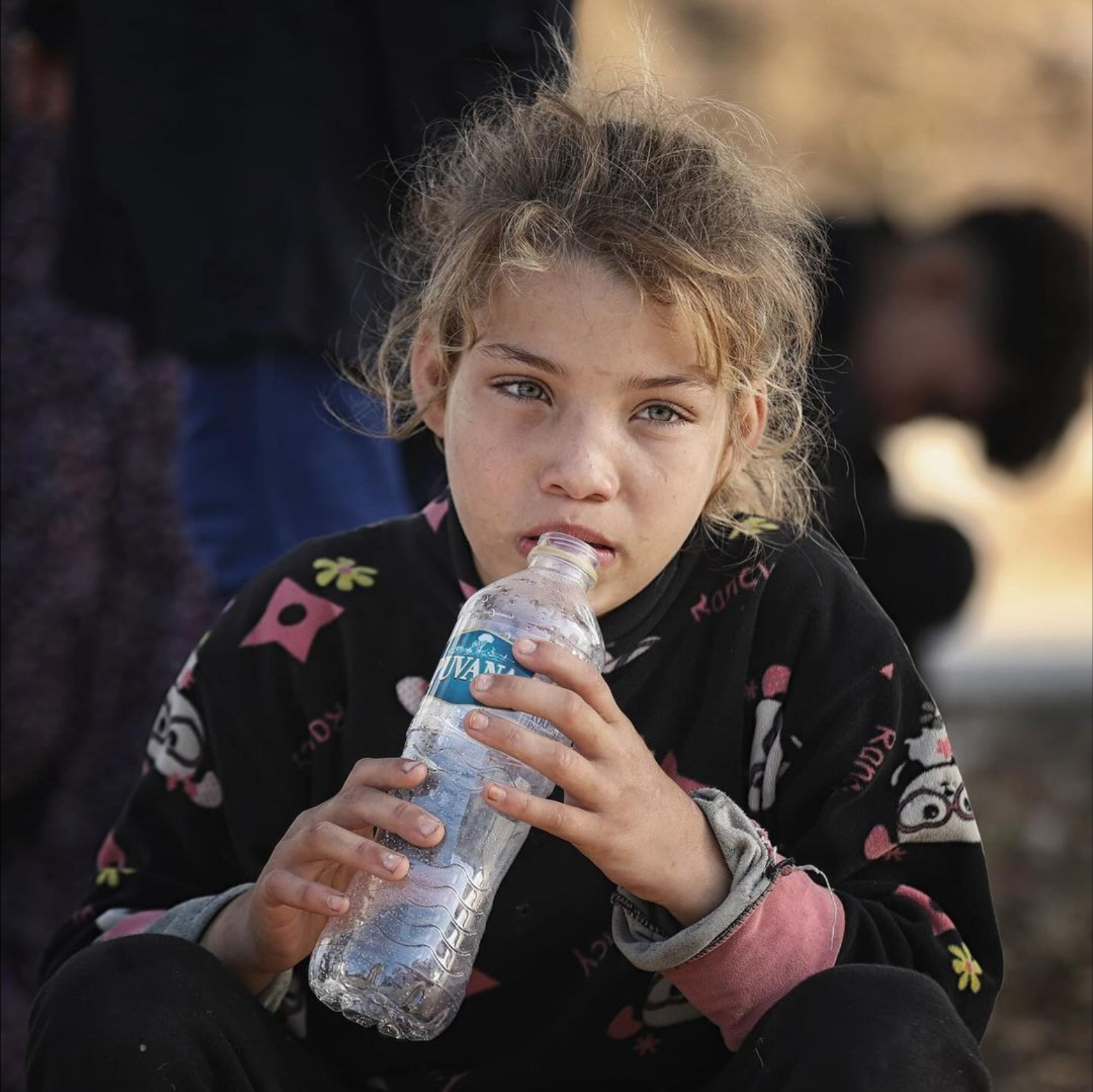

Creating the Typography Element
For my typography element, I used a quote from photographer Motaz Azaiza, where he writes about how Gazans are "born only to suffer" because every Gazan has faced violence from Israel since their birth. I placed this quote over a picture taken by Motaz of a Gazan girl in a camp drinking water.
Final cover
For my cover, I used another image by Motaz Azaiza that shows the damage that has been done to Gaza's homes, along with two Gazan women playing with their babies despite the catastrophe surrounding them. I figured this image displays Palestinian perseverance well. I took inspiration from other Washington Post Magazines and used their logo at the top, along with the date. I also added some information about what the inside of the magazine talks about.







